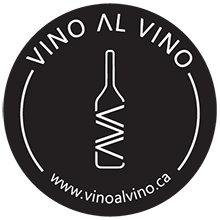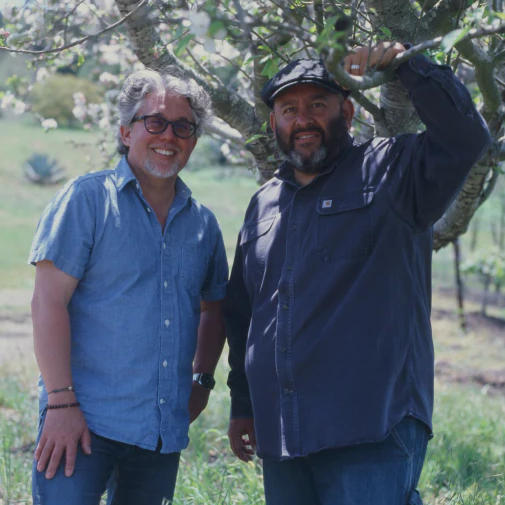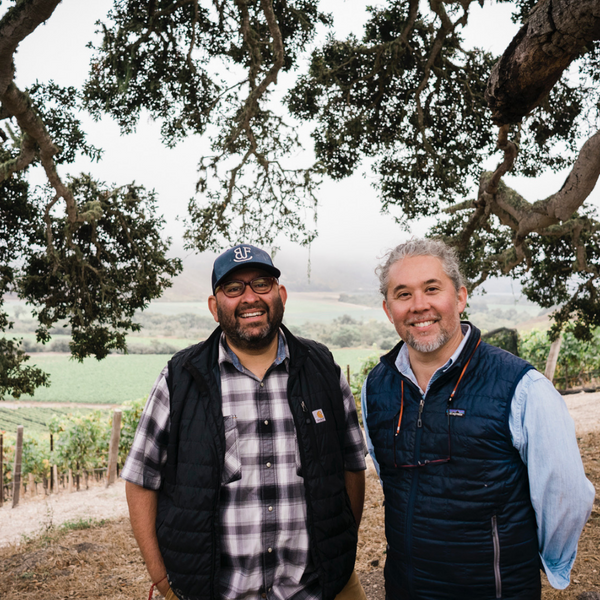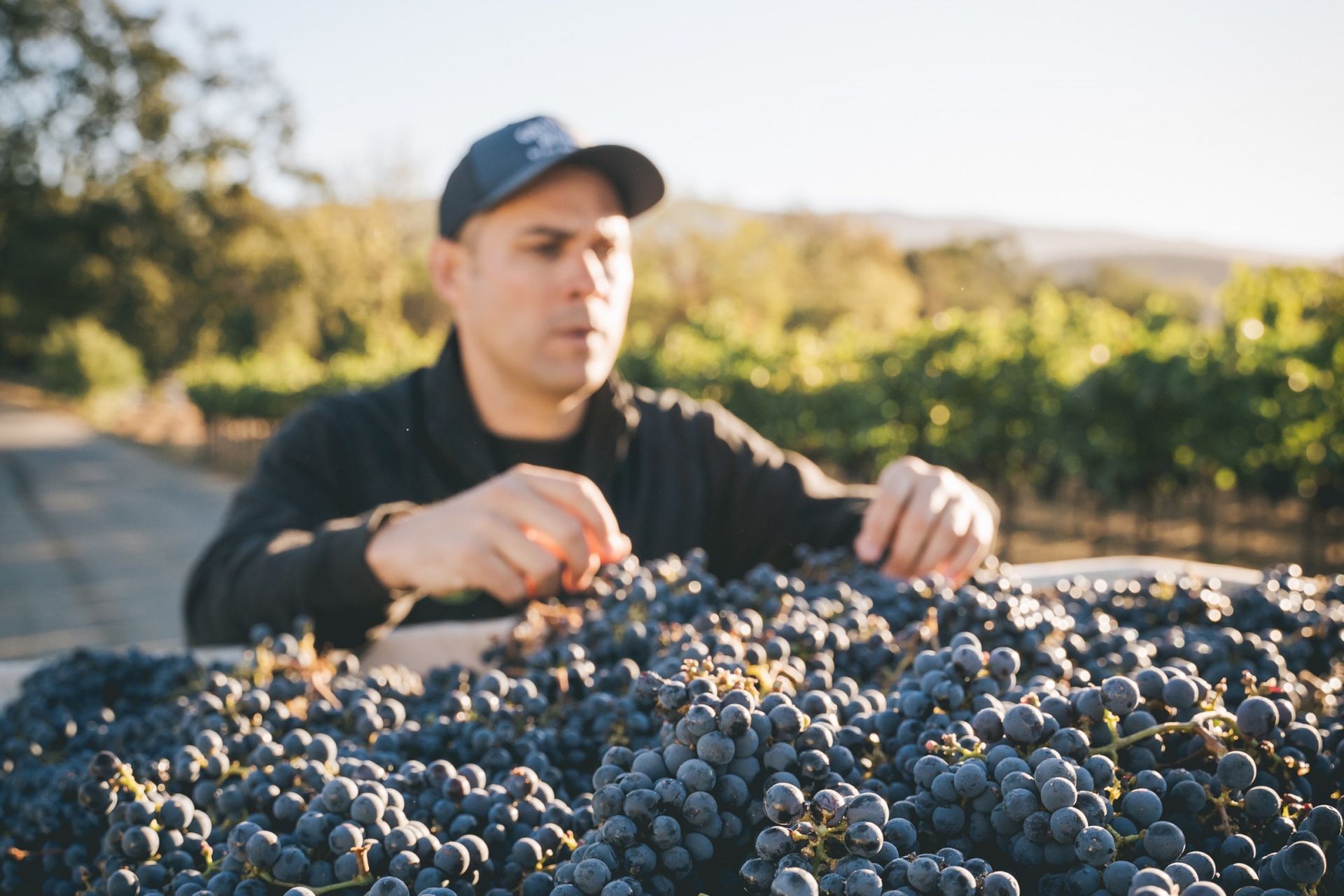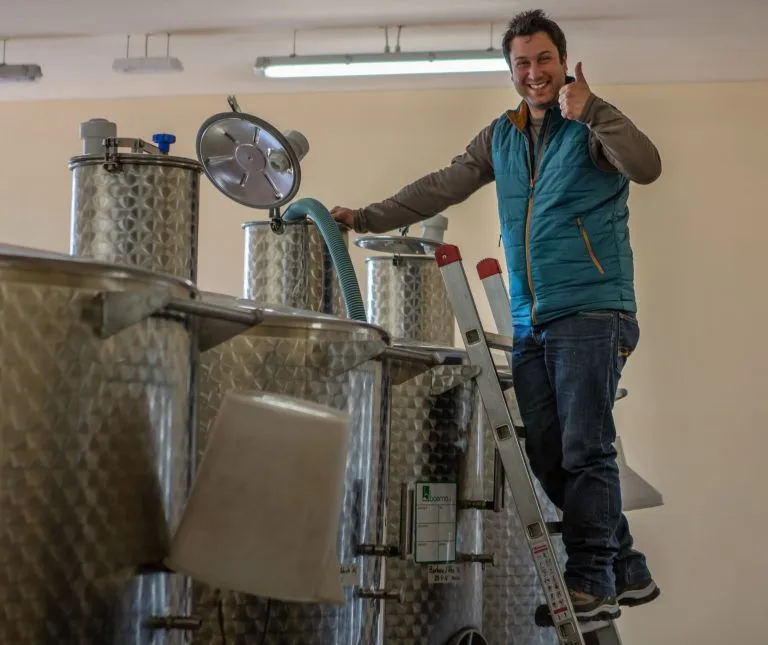Winery Branding | How to develop a wine brand that stands out from the crowd
Winery branding is an aspect that has taken on great relevance in recent years. Regulations have eased up allowing wineries to further their Direct-to-Consumer (DTC) strategies. It is no longer enough to simply have a good product. Wineries need to focus on finding new ways to stand out and build a following and a community. And there are many things to consider based on your target audience.
In recent years, the wine market has evolved significantly. Consumer choices have shifted. There is a growing awareness and desire for more sustainable products. It has never been easier to start a business and this includes the wine industry. The
number of wineries has been steadily climbing upwards. And with it the competition for attention and consumers' wallets. Consumers now have an abundance of choices. Thus, it has become essential to implement new strategies to command consumers' attention.
The numbers are shocking: according to marketwatchmag, the Top 25 wine brands saw their dollar sales grow to $3.79 billion in supermarkets during 2020. Moreover, the top 20 sparkling wine brands have achieved revenues of more than 20% in supermarket chains, compared to other sales channels. The figures are astonishing: sales reached $846 million.
These sales figures can only be achieved through a marketing strategy that makes the brand known, generates interest, and attracts both old and new consumers.
What is the importance of wine branding?
Branding is one of the most important aspects in any industry. But especially if we talk about the
beverage industry. It not only allows people to
get to know your product but also to identify with it. And the world of wine is no exception to the rule. But
how to apply branding effectively to wine?
For that, there are two very relevant aspects:
the label and
the history of the wine.
Labels
The label is the main visual aspect that stands out in a bottle of wine and distinguishes it from private label wines, sold mainly in restaurants. In fact, many customers are often guided by it to know whether to buy a bottle of wine or not, because is the first thing they see.
For example, according to the Wine Vines Analytics site, in a telephone survey carried out at the end of 2005, 51% of people said they prefer labels with a more humorous tone. On the other hand, a resounding 81% said they prefer wines with clear labels, which not only allow them to know the characteristics, but also to know what each wine contains.
Without going any further, Brendan Kinzie, the president of wine and spirits company Fortis Solutions Group, noted that "Today's consumers have hundreds of wine choices available and make their purchase decision in seconds, largely based on label design."
Meanwhile, the 2020 Global Wine Label Awareness Report indicated that the wine label market had grown to 688 million units per square meter as of 2019. Alexander Watson Associates, the same consultancy that launched the report, highlighted a 2.4% annual growth in label production over the 2019-2022 period. AWA also noted that 20% of the global label market is concentrated in 20 wine producers. This reinforces the concept that the wine label is taking more and more relevance in the purchase decision of customers, and therefore in your wine branding strategy.
Story
The label, as we saw earlier, is one of the fundamental aspects of a good wine branding strategy. But it is not the only one. There is another that we could even say is more relevant: the brand story. A good brand story can captivate, excite and even identify buyers with a particular wine.
One of the important components when telling a brand story is the regions where the wines were made. Without going any further, the study "On the Effects of Storytelling on Wine Prices" highlighted the work done by Johnson and Bruwer. They noted that "almost without exception, the addition of regional information on a label increased consumer confidence in product quality."
The same study indicated that McCutcheon, in this case for the Australian market, had reached the same conclusion.
Steps for creating an effective wine marketing strategy
1. Define your audience
It is impossible to create an effective branding strategy if you don't know your target audience in depth. And no, your target can't be ''all wine drinkers''. There are 6 types of consumers, and each has characteristics that distinguish them from the rest:
- Traditional consumers: These are wine drinkers who are not looking for new experiences, but rather cling to a few established brands which inspire confidence in them.
- Image seekers: These are usually willing to try wines with eye-catching packaging and labels.
- Social consumer: Those who only drink wine at social gatherings (with family, friends, at weddings, etc.).
- Satisfied sippers: this type of consumer has a lower degree of knowledge about wines, and usually only buys wines they already know.
- Overwhelmed consumer: this type of consumer tends to be label-driven, as they are overwhelmed by the large number of options on the market.
- Enthusiasts: This last group is usually more influenced by the positive ratings of a wine to choose one brand or another.
Knowing your ideal consumer in depth will allow you to design a specific wine branding strategy for that niche. Some questions you should ask yourself are:
- What does he/she think?
- What are their values?
- What does he/she identify with?
- On what occasions do they enjoy drinking good wine?
- Can I create an effective strategy to reach them?
- Can I create a following?
- What is the Return on Investment (ROI) of pursuing this niche vs. focusing on a different niche?
2. Differentiate yourself from the rest

he wine market is becoming increasingly competitive, mainly due to a large number of existing brands. In the United States, for example, in 2021 there were 11 053 wineries. That same year, in France, the number increased to 27 000 wineries. That means that standing out from the rest can become difficult.
In order to differentiate your wines, you should think about what makes your wine brand unique. It can be, for example, the type of wine you produce or the story of your vineyard. This will allow your target group of customers to feel more identified with your wine over others, which will potentially increase the demand for your wines.
3. Develop your brand story
A good story is key to a successful marketing strategy in the world of wine. This is because it is one of the aspects by which people are guided to choose which brand to consume, since stories appeal to the consumer's emotionality, and emotion is usually behind most consumption habits.
There are some aspects that you should include in your story:
- The wine's place of origin.
- A remarkable fact that is related to your wine, and that allows customers to connect with it.
- The values on which your brand is based, and that you will transmit to your target customer (for example, it can be to support local consumption).
4. The label
The wine label is possibly one of the most important aspects of your wine branding strategy. And not only because it will determine the first impression of your potential customers. Also, the wine label is something they will always remember.
The article The Importance of Wine Label Information highlights that "More than half of wine consumers (57%) use the back label as an important source of information." It further notes that "Previous research has shown that back labels determine the perceived value of wines and affect consumers."
Regarding label aesthetics, Brendan Kinzie points out that, "The label must stand out in a sea of bottles on the shelf and make an emotional connection with the consumer. Design is key to making this happen." Likewise, he highlighted embossing, debossing, and foil stamping as some of the most commonly used marketing strategies for wine labels.
Also, the font you use will help you convey the message you want to give. If your wine brand has a more traditional target market, then you should use serif fonts. However, if your brand is looking for a more disruptive message, then you should go for sans-serif fonts.
Finally, it is advisable that the color of the label ''accompanies'' the varietal. For example, when designing a label for a white wine, you can use lighter colors. Now, if you are designing it for a red wine, then the best option is to use stronger and more intense colors, such as blue or red.
5. Use social media
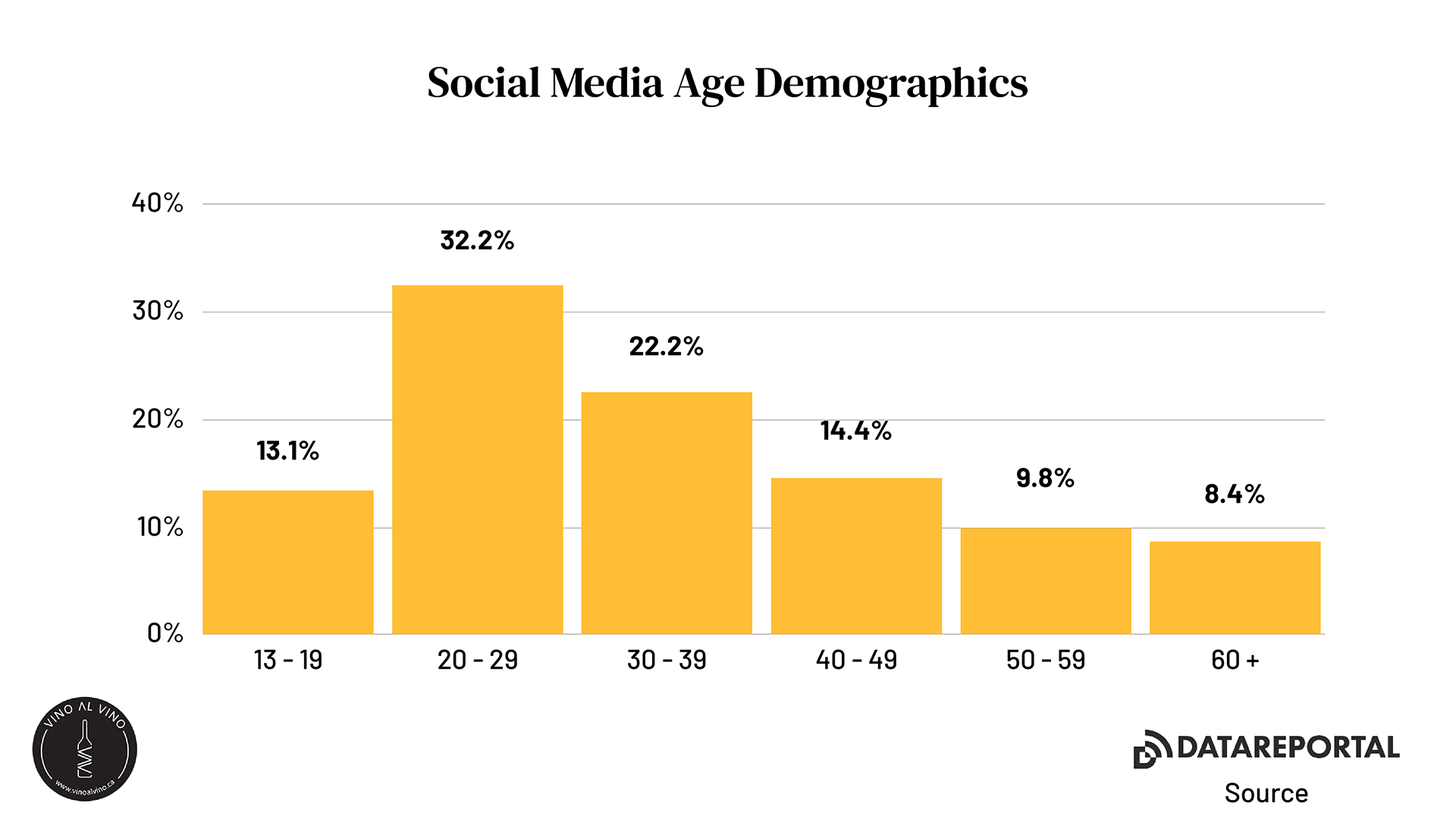
In recent years, social networks have gained popularity as mass media. Using them to publicize your brand will allow you to get a little closer to your target audience, especially if they are in an age range between 20 and 29 years old.
Of course, if you want to form strong long-term bonds with customers, you can't leave blogs out of your strategy. According to the article "Exploring the impact of social media practices on wine sales in US wineries" about 1000 people a month read posts on the popular Vinography blog.
Then, creating a blog or a website for your brand and keeping it updated with unique and quality content will contribute to give your product a voice and identity and will allow you to establish a closer and more stable relationship with your consumers.
Social media is a key aspect of your brand strategy, and learning how to implement it will allow you to connect more with your audience, and be more competitive in your target market, differentiating you from all the rest.
How to increase the visibility of your brand through social media of Wines of British Columbia?
Wines of British Columbia currently has 8 main social networks that will help you promote your wine brand: Twitter, Facebook, Instagram, TikTok, YouTube, Pinterest and Klear. Each of these can help you connect with other members of this association, as well as allow others to learn about your brand.
On Twitter, Wines of BC has 2 accounts, one focused on the wine industry and one focused on consumers. Let's talk a bit more about them:
- The Wine Growers of British Columbia account shares news about the wine industry in BC. It also collaborates with member wineries, wine partners and business stakeholders. To interact with this account, and gain visibility, you can perform some of the following actions:
- Follow the Wine Growers of British Columbia account
- Use the hashtags #BCWine and #CdnWine in your brand's posts and photos.
- Tag the Wine Growers of BC account in your job posts and other important news about your brand.
- Find and share resources and tools relevant to the industry, such as webinar replays, research or data provided by WGBC communication channels, such as YouTube or weekly newsletters.
- On the other hand, the BC Wine account focuses on engaging with potential and active consumers of BC wines. For this reason, it is an excellent opportunity to increase your customer base. Some things you can do to interact with this account are:
- Follow the BC Wine account
- Answer the questions of consumers on the BC Wine account
- Use the hashtag #BCWine to share all the pics and news of your brand
- Search for the hashtag #BCWine to find new ideas to create relevant content
Finally, always remember to upgrade your Twitter account to a Professional Account, so you can enable professional category tagging, profile spotlights and Twitter shopping. Also, it is advisable to secure your Twitter account with two-factor authentication.
Facebook
The Wine Growers of British Columbia Facebook page is another great way to gain visibility and engage with potential and current customers. Some ways to interact with this page are:
- Like and share the most relevant posts of Wine Growers of BC, to gain notoriety.
- Also, make sure to establish a cross-posting relationship with Wine Growers of BC.
- Another thing you can do is check out Facebook's virtual online events, to sign up for the ones that fit your brand's goals.
- Also, remember to use Facebook Ads to market your winery and wines
- Finally, always remember to keep your Facebook account safe, following these tips.
Another social network you can use to interact with Wine Growers of BC and gain notoriety is their Instagram account. There, they share stories of BC vineyards, as well as photos with the most representative wines of the region. Instagram is a great opportunity for you to connect with potential customers and wine influencers. Some of the things you can do to interact on Instagram with Wine Growers of BC are:
- Follow the account, like and share the posts of Wine Growers of British Columbia
- Interact with users, sharing your wine expertise. Don't forget to tag the Wine Growers of BC account.
- Learn how to use Instagram's algorithm to favor your brand.
- If you want to start a collaboration with influencers, Instagram Reels might be your best choice. Always remember that you can use tools like Awario to find the best wine influencers.
TikTok
TikTok is currently the sixth-most popular social media network. Currently, it has 1 billion users. Therefore, if you want your brand to have a greater reach and promote content from influencers you are collaborating with, you must have an account in this social media network. To use it in the most efficient way, you can perform some of these actions:
- If you are new to TikTok, you can use this quick beginners guide.
- Always try to post short wine stories, like you would do on Instagram.
- Also, you should check that an influencer follows TikTok’s ads best practices before collaborating with him.
- Finally, you should promote content from the influencer’s account. You can learn how to do that here.
YouTube
Audiovisual content is key to promote your brand. For that reason, you should have an active YouTube account with engaging content. You can interact with WGBC's YouTube account and create quality content on the platform by performing some of these actions:
- Share interesting videos of WGBC on your social media accounts
- Contact with WGBC via e-mail to share some of your videos with them, so they can add them to a playlist.
- Comment on videos of interest, and always be aware of the doubts on the commentary section, so you can help users and engage with them.
- If you post short clips, you will have bigger chances to engage with potential clients. For example, did you know that YouTube Shorts receives 15 billion views per day?
Pinterest is a social media network with a large global reach. For example, during the month of July it had 433 million active users. In addition, the reach of the platform's ads during that month was 251.8 million users. For that reason, Pinterest is another social media network that you should keep active with your brand's content. To increase your reach, you can interact with WGBC's Pinterest account in different ways:
- Make sure you like and share interesting Pins of WGBC account
- Also, you can participate in campaigns organized by WGBC for members on Pinterest.
- WGBC also hosts seminars on Pinterest, which you can attend to connect with other producers.
Klear
Klear is a very specific social media network, and perfect for you to find the best influencers for your brand. To make sure you build a mutually beneficial relationship with an influencer, you can follow the steps below:
- Search for influencers that can potentially fit your brand vision.
- Contact with WGBC, so they can get you a full report on the influencer’s reach and other experiences that the influencer’s had working with brands.
- Always try to negotiate rates that are mutually beneficial for both your brand and the influencer.
Finally, remember that are tools such as Hootsuite and Sprout Social that can help you track your social media strategy success. Also, don't forget to link your brand website to Google My Business, so that people can easily find your website when searching on Google, and have the best possible experience.
How to tell the story of a wine?
Tell genuine stories
If you tell genuine stories about your wine, then more people will be able to form personal bonds with your winery. Therefore, in addition to giving useful information about the ingredients of your wine, you can tell some part of the viticultural and vinicultural process that makes your wine unique. Like for example, we don't spray herbicides, pesticides and fungicides in our vineyards. But that means that we have to pass through the vineyard more often to ensure that we maintain the health of the vines and the grapes. This in turn increases the cost of production. So this is the reason why our wines cost X vs. a conventionally produced wine that costs Y.
A beautiful family story can also help your customers identify with your product. But the most important thing is that,
when designing the story, think about your target audience. That will allow them to end up leaning towards your product.
Be creative. Be bold.
But does an emotional connection have to appeal to the sentimental? Not always.
An emotional connection can also be generated from the humorous. This works well,
especially for brands that want to give a disruptive and authentic vision. One of the most concrete cases is that of SLO Down Wines, a wine company that appeals to humorous stories, sometimes bordering on the bizarre, to differentiate itself from the rest.
The label is part of the story
Taking the label as something isolated can be a mistake, especially considering that it is one of the first things consumers see in a wine. Therefore, the label design should not only stand out from the rest of the wine, but also be part of the story.
For example, the label of the Zorro y Arena brand used a fox, which is part of a legend that takes place on the banks of a river, where the brand is located. The logo itself tells a story, which is accompanied by the other elements of the label.
Using a cork or a screw top, that is the question
The choice of using a cork or screw top to close a bottle of wine also conveys a message. Corks tend to be associated with tradition, and are more accepted by this type of consumer. On the other hand, screw tops are more accepted by the new generations of wine drinkers, although they also run the risk of being usually associated with cheap wines. So, you should always think on your consumer, even when bottling and closing a wine.
Should you bottle your wine, or use the box wine format?
Although bottled wine is more widely accepted than box wine, because the latter is usually associated with low-quality wines, box wine is also a format that we are seeing more and more in the market. It happens that more and more people choose the latter format, mainly for two reasons:
- It is more economical (its content is equivalent to 4 bottles of wine).
- It is easier to open since it does not have a cork.
Whether you use one format or another, be sure that it aligns with the message you want to convey.
3 examples of memorable marketing stories
These are some of the wine brands that, over time, have managed to stand out and generate from their stories, become etched in the memory of their consumers, generating empathy and loyalty and expanding their sales margin.
1. Francis Ford Coppola Winery
The film director Francis Ford Coppola stands out for his impressive narrative and scenographic capacity. In 1975, a year after winning two Oscars for The Godfather II, Coppola decided to purchase Inglenook, one of Napa's most prestigious vineyards.
With strong storytelling and compelling photography, the
Francis Ford Coppola Winery brand made storytelling part of the DNA of the company and its employees.

Since its beginnings in the wine industry, Coppola has turned each new product or acquisition into an adventure and a mysterious story to tell.
In 1999 he launched Sofia Blanc de Blancs, a sparkling wine created in honor of his daughter. The bottle, label and packaging reflect Sofia's mischievous, youthful and adventurous spirit.
Another great example is the Diamond Collection: it has wines like Pinot Noir labeled with a black label and silver typography. The style of the label expresses one thing: the exclusivity of every wine.
The Coppola winery has made sure that buying a bottle of its wine is synonymous with adventure: you are not buying a bottle of wine, you are buying an experience.
2. Wirra Wirra Vineyards
Australian brand Wirra Wirra is another good example of how a good story is often the centerpiece of any marketing campaign. In this case, the brand made the bold decision that the central story would not be their own, but that of their community.
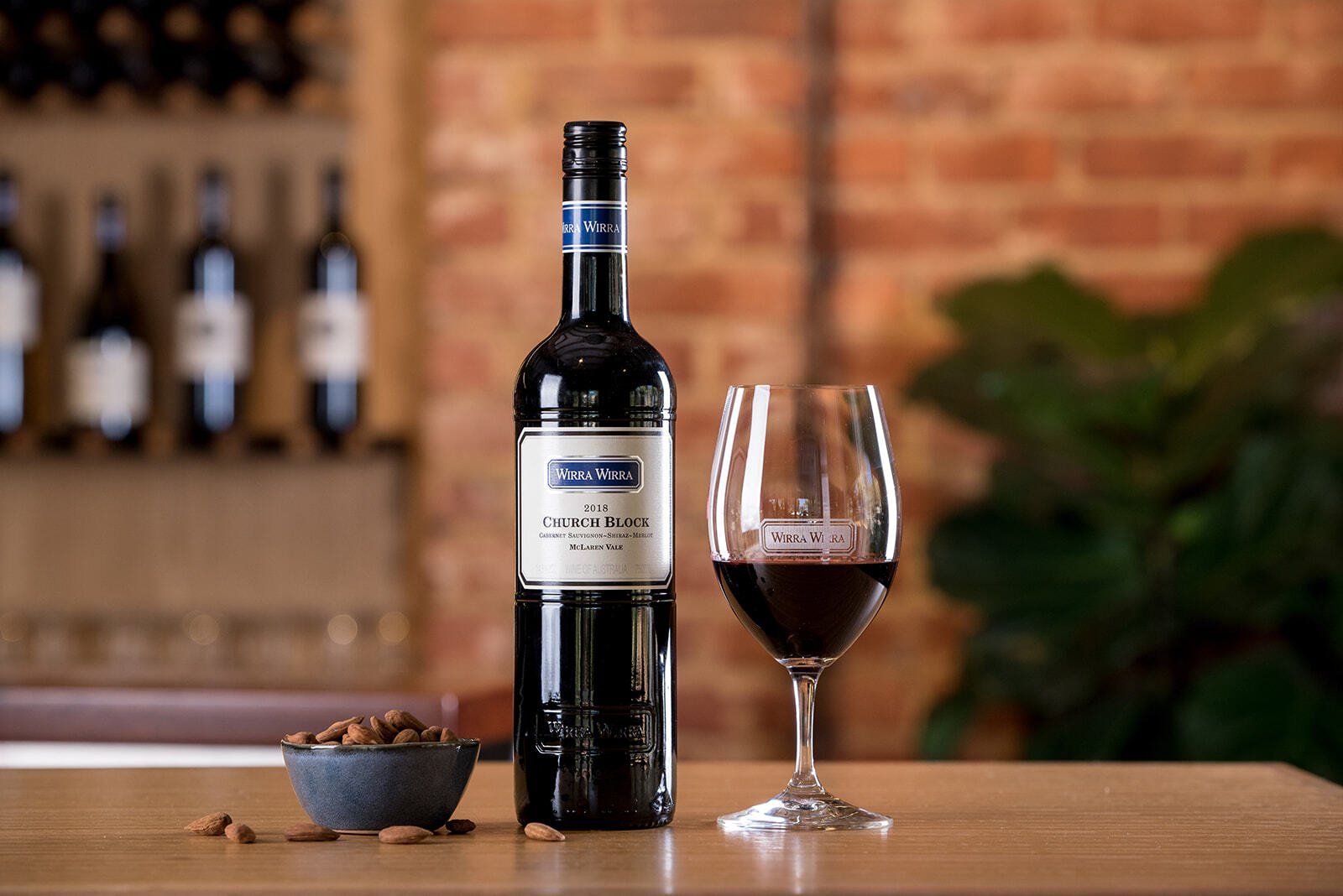
Participating and feeling like a protagonist, even if only for a few minutes, is something that today's youth deeply crave, and Wirra Wirra knows this well. That's why they have encouraged their community to share their stories by telling their own experiences and connections with their most famous wine, Church Block.
The campaign was called "Everyone has a Church Block story... What's yours?" and was designed so that both new and old customers could remember and share with the community fun moments in their lives associated with the brand.
The campaign was a huge success and led the community to generate very positive associations between the brand and happiness and love.
3. Yellow Tail Wine
Finally, let's talk about another Australian brand Yellow Tail Wine. This is a great example of the use of the Blue Ocean marketing strategy. The strategy consists of avoiding markets with stronger competitors (the sharks). Instead, it seeks to create less competitive markets, where the brand can become strong.
In the case of Yellow Tail, its founders decided not to take their product to the Italian and French markets, as they could not compete with the quality and abundance of wines there. Instead, they decided to look at the U.S. market. There, they managed to become strong with a particular strategy:
to present their brand as fun and accessible. In fact, one of the phrases of the marketing campaign was "we take wine seriously, so you don't have to".

But that wasn't the only thing that made Yellow Tail successful again. The brand managed to create an easy-to-drink product that even people not used to drinking wine could consume. On the other hand, the packaging design was much simpler, easier to understand and remember than that of other more "elitist" wines. Finally, they entered the U.S. market with a price below $10, which was in line with the rest of their strategy.
The results were not long in coming. During the first year, 1.000.000 bottles were sold. Moreover,
in 2003 it became the best-selling 750 ml red wine in the United States. Thus, it managed to create a new market and take advantage of it. And that is one of the keys to the Blue Ocean strategy.
Recommended post:
A platform to help your brand grow
Last but not least, we are going to tell you about a very complete platform that integrates different functions and tools to help your brand grow: Vinterre.
This platform will offer you a great amount of benefits, such as:
- Having all your tools in one place
- Get quality analytics on your brand to know what are its strengths and weaknesses
- Connect with importers, distributors and customers from all over the world
Next, we will tell you about the specific benefits this platform has for your brand.
All your business, in one platform
As we mentioned before, Vinterre is the platform that allows you to integrate several tools in one place. Thus, you will not have to use a lot of programs and tools, saving you time and money. Among other things, with Vinterre you will be able to:
- Integrate your Point of Sale, E-Commerce and accounting system to have a real-time view of your inventory.
- In addition, you will be able to analyze the performance of Customer and Revenue channels by integrating CRM (Customer Relationship Management), Tasting Room Reservations, Accounting, E-Commerce and even Point of Sale systems.
Thanks to Vinterre, managing your business will no longer be a problem, and you will even be able to spend more time with your family or doing what you love, without worrying 24/7 about the health of your business.
Comply with international regulations
As you probably know, as of January 1, 2023, you will have to comply with the Common Agricultural Policy 2023-27 regulations to market your wines in Europe. This reform indicates that all wines marketed in the European Union must have certain information on the label. Some of this information is:
- country of origin
- wine category
- ABV
- warning messages to avoid excessive wine consumption
- sustainability certification
Now, you could do it via the ALC Label platform. But you would have the disadvantage that this platform has a limit of labels to create, and if you want to exceed that limit you will have to pay more money.
Luckily for you, Vinterre has an E-Label function, which will allow you to adapt to the new European regulations:
- This Vinterre feature will allow you to create as many digital labels as you need.
- In addition, by using this functionality you will be able to include much more personalized information, such as the type of terroir in which the grapes have been grown or the method of winemaking, thanks to the detailed Technical Sheet. This will allow you to engage more with your customers.
- Also, you can create a QR code, that your customers can scan to access a detailed spreadsheet about each wine.
- Finally, with the E-Label function you will bring a global awareness to your brand, and will be able to reach more markets than with U-Label.
Global awareness for your brand
Marketing your wine brand globally has become easier in recent years, thanks to the advancement of the internet and globalization. And it's really an opportunity you shouldn't miss: according to a Statista report, the global wine market revenue will reach a valuation of 528,682 million dollars by 2025.
However, not everything is as simple as it seems: connecting with new consumers and talking to importers and distributors to market your wines in other countries can be time-consuming, especially if you have to use different platforms for each task.
For that reason, in Vinterre they offer you the best alternative, so you can contact importers and distributors from different countries and at the same time, your potential customers can notice your brand, and have more information to connect with it.
- Vinterre offers you a curated list of the best wine importers and distributors in each country, so you can contact them.
- With just one click, you can enter their profile, and check if they usually work with wines of the same style as yours.
- At the same time, potential customers will be able to know specific information about each of your wines.
Keep your customers informed
Details are everything, especially in the world of wine. For that reason, making available to your customers detailed information about the vintage of a wine, the foods with which it pairs best, the type of terroir used to grow the grapes or the aroma and flavor notes that will be found in the wine can be a great competitive advantage.
Vinterre is well aware of that. That's why this platform offers you detailed spreadsheets, where you can expose in a clear and organized way all the characteristics of your wine. Among other things, with Vinterre you will be able to:
- Have very complete detailed data sheets for each vintage of your wines.
- Share data sheets with both current and potential customers, in just one click.
- Also, you can send your data sheets to wine fairs, competitions and specialized press.
- Offer stakeholders the information they need, which is key for them to promote and sell your wines.
Take data-driven decisions
Data is key to make better decisions that positively impact your brand. And, in the world of wine, there are different analytics that allows you to better understand who your customers are in different parts of the world, which will help you optimize your marketing actions. In this area, Vinterre can be the solution you are looking for:
- With Vinterre, you can know exactly where your customers are located.
- In addition, you can filter them by age range, country, and even by gender to get to know them better.
Keep track of upcoming Monopoly Tenders
It can be very overwhelming to sell your wines to a monopoly. You don't just need to be aware of when a monopoly tender is open in a specific country. You should also keep in mind that, in order to have a real chance of marketing with them, they usually ask for a lot of information about the performance of your wines. At this point, Vinterre can be of great help:
- With Vinterre, you will be able to find the best tenders around the world, without having to check other sites.
- You can also filter them by country, region and price point.
- Moreover, Vinterre provides you with key data about your wines, which will allow you to secure your sales to the monopolies.
Final words
Developing a successful wine brand is not an easy task. In the decision-making process, you need to consider your target audience. In addition, you must be sure to develop a story in which you tell not only the components of your wine, but also the story of the place where it is made and what motivates you to make it.
The label of your wine is another aspect that should not be left out of your branding strategy. This way, wine consumers will be able to notice your wine over others they may find in the market (or in a restaurant).
Finally, you should not forget to use all possible means of dissemination, so that your audience can get to know both your wine and its history. The presence in social networks is very important, as it allows you to reach a larger number of people quickly. But if you want to build a loyal and solid audience base, as data shows, then you should not leave a website out of your marketing strategy. An optimized website, with engaging content about your wines, can really help you to boost your sales.
You may find these interesting...
If you found the above article interesting, check out other articles on Wine Branding:
